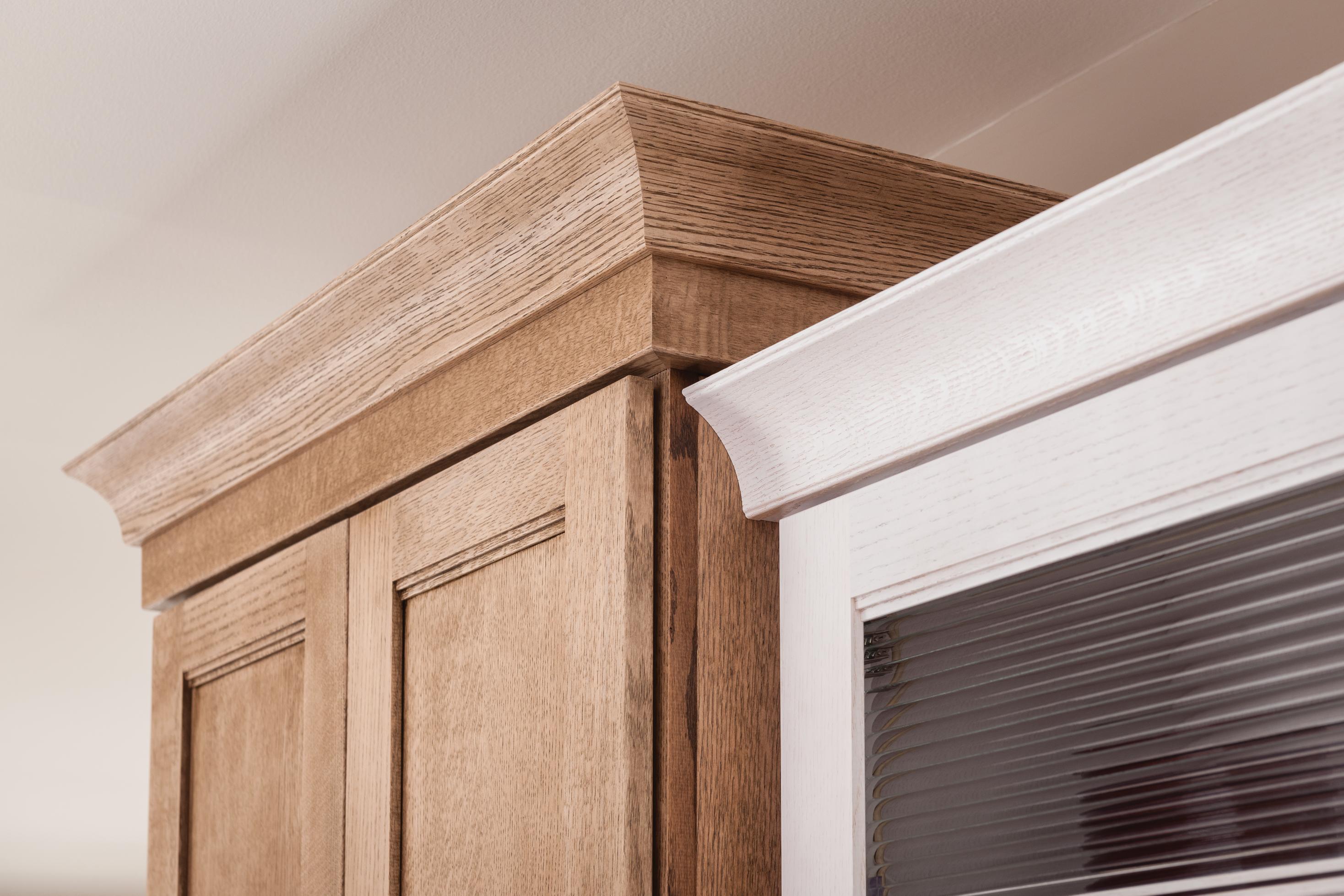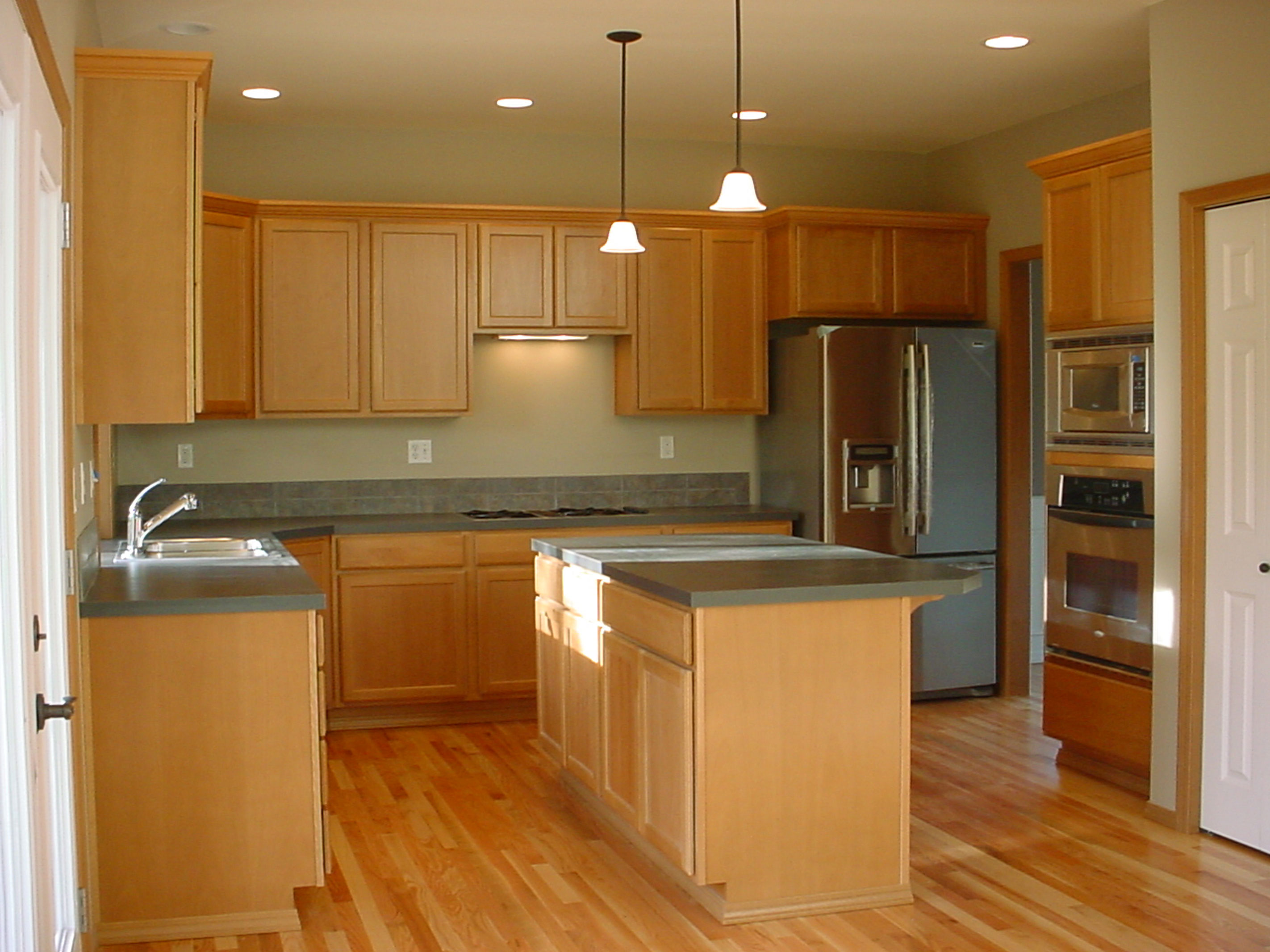Types of Decorative Wood Trim: Decorative Wood Trim For Cabinets

Decorative wood trim is an excellent way to add visual interest and elegance to your cabinets. It comes in a variety of styles, each with its own unique characteristics and benefits. Choosing the right type of trim can significantly enhance the overall aesthetic appeal of your cabinets and make them a focal point in your kitchen or bathroom.
Types of Decorative Wood Trim
Wood trim can be broadly categorized into different types, each with its distinct features and uses. Here are some popular options:
- Crown Molding: Crown molding is a decorative trim that is typically installed at the junction of the wall and ceiling. It adds a touch of sophistication and can visually elevate the height of the room. Crown molding can be used on cabinets to create a more finished and elegant look. It’s available in various profiles, from simple to elaborate, and can be customized to match the style of your cabinets.
- Chair Rail: Chair rail molding is a horizontal trim that is installed on the wall, typically at a height of about 36 inches. It serves a practical purpose by protecting the wall from damage caused by chairs or other furniture. However, chair rail molding can also be used on cabinets to add visual interest and define different areas within the cabinet space. It can be used to create a decorative paneling effect or to accentuate the top or bottom of the cabinet doors.
- Baseboard: Baseboard molding is a trim that is installed along the bottom of the wall, covering the gap between the floor and the wall. It provides a clean and finished look to the room. Baseboard molding can also be used on cabinets to create a more polished and integrated appearance. It can be used to create a continuous line of trim around the entire cabinet or to accentuate the base of the cabinet.
- Picture Frame Molding: Picture frame molding is a type of trim that is used to create a frame around a picture or other artwork. It can also be used on cabinets to add a decorative touch and enhance the overall design. Picture frame molding can be used to create a border around the cabinet doors or to frame a specific section of the cabinet. It is often used to create a traditional or classic look.
Comparison of Wood Trim Types
Here is a table comparing the different types of wood trim, including their cost, durability, and aesthetic appeal:
| Type | Cost | Durability | Aesthetic Appeal |
|---|---|---|---|
| Crown Molding | Moderate to High | High | Elegant and Sophisticated |
| Chair Rail | Moderate | Moderate | Traditional and Functional |
| Baseboard | Moderate | High | Clean and Polished |
| Picture Frame | Moderate to High | Moderate | Classic and Decorative |
Installation Techniques

Installing decorative wood trim on cabinets is a relatively straightforward process that can enhance the appearance of your kitchen or bathroom. With the right tools and materials, you can achieve professional-looking results that will add a touch of elegance to your cabinets.
Tools and Materials
To install decorative wood trim on cabinets, you will need the following tools and materials:
- Measuring tape: To accurately measure the trim pieces.
- Miter saw or hand saw: To cut the trim to the desired length and angles.
- Wood glue: To adhere the trim to the cabinets.
- Finishing nails or brads: To secure the trim in place.
- Nail gun (optional): For faster and easier nail installation.
- Clamps: To hold the trim in place while the glue dries.
- Sandpaper: To smooth out any rough edges.
- Wood filler: To fill any gaps or holes.
- Paint or stain (optional): To match the trim to the cabinets or create a desired look.
Step-by-Step Installation, Decorative wood trim for cabinets
Here is a step-by-step guide for installing decorative wood trim on cabinets:
- Measure and cut the trim pieces: Use a measuring tape to determine the exact length and angles of each trim piece. Cut the trim using a miter saw or hand saw, ensuring precise cuts for a clean finish.
- Apply wood glue: Apply a thin layer of wood glue to the back of the trim piece, ensuring even coverage.
- Position and secure the trim: Position the trim piece on the cabinet, aligning it with the desired location. Use clamps to hold the trim in place while the glue dries. If using nails, pre-drill pilot holes to prevent splitting the wood.
- Finish the trim: Once the glue has dried, use sandpaper to smooth out any rough edges or imperfections. Fill any gaps or holes with wood filler, and let it dry completely. If desired, paint or stain the trim to match the cabinets or create a desired look.
Tips for Professional Results
Here are some tips to help you achieve professional-looking results when installing decorative wood trim:
- Use a miter saw for precise cuts: A miter saw is essential for making accurate cuts, especially for corners and angles. It will ensure a clean and seamless finish.
- Practice cutting angles: Before cutting the trim for your project, practice cutting angles on scrap wood to ensure you are comfortable with the process and achieving accurate cuts.
- Use clamps for secure attachment: Clamps are crucial for holding the trim in place while the glue dries, ensuring a strong and secure bond.
- Avoid over-tightening nails: Over-tightening nails can cause the wood to split or crack. Drive nails just until they are flush with the surface.
- Sand and finish carefully: Sanding and finishing the trim properly will create a smooth and polished look. Take your time and pay attention to detail.
Design Considerations

Decorative wood trim can elevate the aesthetic appeal of your cabinets, transforming them from functional units to stunning design elements. By strategically incorporating trim, you can create visual interest, define spaces, and highlight architectural features, resulting in a more sophisticated and personalized look.
Enhancing Cabinet Design
Decorative wood trim adds depth and dimension to cabinets, enhancing their overall design. It can create a sense of visual interest by breaking up large, monotonous surfaces. For instance, adding a simple molding around the perimeter of cabinet doors or drawers can create a more refined look.
Creating Visual Interest
Trim can be used to create a variety of visual effects. For example, you can use different types of trim to create a sense of movement or to highlight specific areas. Using contrasting wood species or finishes can add another layer of visual interest.
- Vertical trim can create a sense of height and make cabinets appear taller. This is particularly effective for cabinets in smaller spaces.
- Horizontal trim can create a sense of width and make cabinets appear larger. This is a good option for cabinets that are narrow or shallow.
- Diagonal trim can add a touch of whimsy and create a dynamic visual effect. It can also be used to create a focal point.
Defining Spaces
Trim can be used to define spaces within a kitchen or bathroom. For example, you can use trim to create a visual separation between the upper and lower cabinets. This can make the space feel more organized and cohesive.
- Crown molding can be used to create a visual transition between the upper cabinets and the ceiling. This can make the space feel more finished and elegant.
- Base molding can be used to create a visual transition between the lower cabinets and the floor. This can add a sense of polish and sophistication.
Highlighting Architectural Features
Trim can be used to highlight architectural features in your kitchen or bathroom. For example, you can use trim to frame a window or a doorway. This can create a sense of emphasis and draw attention to these features.
- Picture frame molding can be used to frame a window or a mirror, creating a more polished and refined look.
- Chair rail molding can be used to create a visual separation between the upper and lower walls. This can add a sense of sophistication and formality.
Complementing Cabinet Styles
The type of trim you choose should complement the style of your cabinets.
- Traditional cabinets often pair well with ornate trim, such as crown molding, dentil molding, or beadboard. This adds a sense of elegance and formality.
- Modern cabinets typically feature clean lines and simple designs. For these styles, consider using minimalist trim, such as flat molding or simple cove molding. This will help maintain the clean, contemporary aesthetic.
- Farmhouse cabinets often feature a rustic and casual aesthetic. For these styles, consider using reclaimed wood trim, distressed trim, or trim with a natural finish. This will enhance the rustic charm of the cabinets.
Decorative wood trim for cabinets – Decorative wood trim can add a touch of elegance to any room, and it can be especially effective in creating a cohesive look for your cabinetry. If you’re looking for inspiration, consider the serene beauty of a purple and white themed bedroom , where the soft hues and clean lines can inspire a similar sense of calm and sophistication.
By carefully selecting the right wood trim, you can achieve a similar effect in your own space, whether it’s a bedroom, kitchen, or bathroom.
Decorative wood trim can elevate the look of your cabinets, adding a touch of elegance and warmth to your space. For a calming and sophisticated feel, consider a black, white, and taupe color scheme, like the one showcased in this black white taupe bedroom design.
Wood trim can complement these colors beautifully, creating a cohesive and inviting atmosphere.
